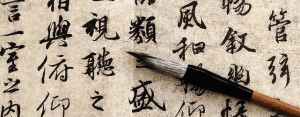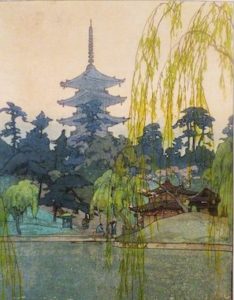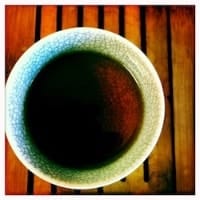Just how did art and science get broken apart and shoved into competing and adversarial camps? Aren’t these both just ways of using observation and making sense? Don’t they both tend to take whatever status quo is looking for a bit of transformation and giving it a nudge in the direction of instability?
The hardest of sciences, physics, says there is no way to absolutely determine anything, that the very act of observation changes the situation. That the universe is more like Silly Putty than Legos. That probability, movement and relationship change everything.
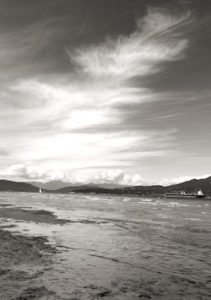 And then we have that other so-called hard science of medicine, which is, when you think about it, anything but. How can we pull a hard science perspective out of the incredible variability that arises out of everyone’s complete uniqueness?
And then we have that other so-called hard science of medicine, which is, when you think about it, anything but. How can we pull a hard science perspective out of the incredible variability that arises out of everyone’s complete uniqueness?
How can we run a medicine based on “evidence” when modern physics suggests that the perspective of the observer influences all experiments? How is it that one procedure or treatment wins the insurance roulette and another does not? Is that really based on evidence? Whose evidence? Who paid for that study? What’s their back story? And how could that story not, in some way, influence the outcome?
Science loves to break the pieces apart, transform life into an exploded view that hangs unchanging so we can see the spaces in between. And perhaps, if we look close enough at that emptiness, see the relationships between the parts as well.
I’m still not sure how art and science ended up on opposite sides. Perhaps because art leans on the imagination and pulls on the poetry that forms and holds galaxies in their wheel through space. Art notices that the patterns in a leaf mimic those of river deltas and the profusion of blood in our tissues. Art listens to the quiet, and looks at the spaces in between and is less concerned with thing than relationship. Science loves to name, classify, sort and store, to freeze creation into the illusion of predictability.
However, as biological creatures with an expiration date and a deep sense of insecurity navigating a world that is ever changing, we long for security and stability.
We live our lives in between these poles of desire for stability and a thirst for something unexpected that widens our perspective. I suspect we need regular doses of each.
Unanswered Questions
A couple of questions come up frequently in clinic, questions that I often leave unanswered. There is, however, a method to my madness, because inviting you to sit with the uncertainty of what might unfold is part of the power of an acupuncture treatment.
The most common question is “What can I expect from this treatment?”
And the truth is, I don’t know.
What I do know is that I’ve selected certain points and needled them in a particular way to call forth a therapeutic conversation. But the way your system processes that stimulation, the way your brilliant innate intelligence decides to recalibrate your rejuvenation process — that I cannot know.
We have to see what happens, and it can take several days for an acupuncture treatment to fully unfold itself into your experience. So it is helpful to pay attention, especially to the moments that evoke “Huh, that’s weird,” or “Wait, that’s strange,” or some other fleeting thought that leaves you with a feeling of puzzlement. Many times, issues — even chronic issues — can change and you are aware only that life is flowing with more ease. It’s hard to notice the absence of something that has gently slipped from your awareness.
The other reason for not telling you what you “should” expect is that it can play into the placebo effect, and I’m not interested in placebo. I’m interested in what actually happens — or doesn’t — for you.
Finally, if you pay attention only to the parameters I’ve set, you’ll miss the other things that can happen. For example, if I say, “Your heartburn should improve,” then you might miss that your sleep has improved in soundness and length, or that your emotions have been more stable or that your sinuses have cleared up.
The other two questions I often get is, “Why did you choose those points and what are they supposed to do?” These are great questions, and it’s good to be curious about and involved with your treatment. But usually I don’t answer these either, because again, I want you to have your experience free from the constraints of my words.
In short, it’s not helpful to acquire a borrowed story. It can blind you to your actual experience. I want to leave room for something quiet beyond words to find you. I’d rather invite your body and mind to awaken and reorient to the gentle stimulation of the needles that help you to enliven your resources for rest, repair and rejuvenation.
So it’s not that I’m holding out on you, but rather I am inviting you to notice your experience without prompting or expectation
About Colds and Flu, With Timely Tips for Self Care
Why is it that during this time of year we experience more flu and colds?
It’s not because there are more viruses, because they are around all the time. It’s not as though the bugs that invade us have a favorite season. You’ll find strep on everyone’s skin, so why does it sometimes bloom in the throat? Rhinoviruses are ever present and constantly evolving, so why is it at this time of year that they seem to flower in your sinuses?
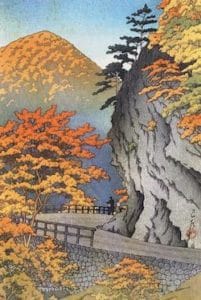 Though it’s easy to think the bugs are worse at this time of year, the answer has to do with your internal terrain. The influence of more darkness than light on your circadian rhythms. The way cold and wind can make you more susceptible to the ever-present influence of microbes. And the ironic notion that we can live with impunity outside the cycles and seasons of nature.
Though it’s easy to think the bugs are worse at this time of year, the answer has to do with your internal terrain. The influence of more darkness than light on your circadian rhythms. The way cold and wind can make you more susceptible to the ever-present influence of microbes. And the ironic notion that we can live with impunity outside the cycles and seasons of nature.
In this part of the world, all of nature is withering, drying and slowing. The leaves on trees wilt and fall away as the sap moves inward, away from the branches. It happens to us as well. Our lungs and skin dry as the season moves toward cold and the fluids in our body thicken and move toward to the center.
This time of year, our immune system becomes more vulnerable to invasion. Our internal fire dims a bit, and requires some tending. You’ve probably noticed you gravitate more towards nourishing soups and warm fluids and choose to eat more cooked, warm foods than raw, cold foods.
Maybe you also allow yourself to sleep a bit more. That’s good. More rest helps support your well being in this season. The entire world slumbers with increased darkness, so allow this opportunity for restoration before a new season that will bring more light and activity.
Also, avoid icy cold drinks. Cold beverages slow all metabolic processes, including the vibrancy of your immune system. Go for warm fluids, even if you “love” ice water. Try it for a month and notice how you feel.
I’ll not dwell here on the harm that sugar can do. But know that the increased consumption of sugar over the holidays feeds a false fire of vitality. You’re actually running yourself down with sugary holiday treats.
Also, Chinese medicine considers the back of the neck a delicate aspect of the body. Keep yours covered and protected against cold and wind. If you do feel yourself getting sick, do yourself a favor. At the first sign of a scratchy throat or metallic-tinged sneeze, stop. Rest. Get some acupuncture or extra sleep. And if your illness involves a fever, let yourself sweat, as this is your body’s natural way to overcome the pathogen.
Stewed Pears to Counteract Fall Dryness
Here is a tasty recipe to help nourish and protect the throat and lungs during this dry time of year. This recipe comes to you from my acupuncture colleague Lynn Maloney, who is based in Columbia, Mo.
Stewed Pears
 2 firm Bosc pears, washed and sliced lengthwise in 4-5 pieces
2 firm Bosc pears, washed and sliced lengthwise in 4-5 pieces
1 cup water
1 2-inch piece cinnamon stick
3 whole cloves
2 bay leaves
1/8 tsp sea salt
1/2 tsp ghee (clarified butter) or coconut oil
Place pears in a medium saucepan with the water, spices, and salt. Turn heat on high until water comes to a simmer. Cover and reduce heat to low. Simmer 10-15 minutes. The sliced pears should maintain their shape but be soft.
Remove from heat. Add the ghee or coconut oil and let sit, covered for 10-15 minutes.
To boost the nutrient profile, sprinkle a few nuts or seeds on top of the stewed pears. Or add a few slices to your morning bowl of oatmeal, or for a real treat, enjoy with granola.
Variations
Other varieties of pears work too, but cooking times may vary.
You can experiment by adding other warming digestive spices such as whole cardamom pods, star anise, black peppercorns or fresh sliced ginger.
Also, using green apples instead of pears can be a delicious and healthy variation. Peel and slice or dice the apple and follow the same recipe.
We’ve been wrong about what our job is in medicine.
We think our job is to ensure health and survival. But really it is larger than that. It is to enable well-being. And well-being is about the reasons one wishes to be alive. Those reasons matter not just at the end of life, or when debility comes, but all along the way.
Whenever serious sickness or injury strikes and your body or mind breaks down, the vital questions are the same:
What is your understanding of the situation and its potential outcomes?
What are your fears and what are your hopes?
What are the trade-offs you are willing to make and not willing to make?
And what is the course of action that best serves this understanding?
— Atul Gawande, Being Mortal

